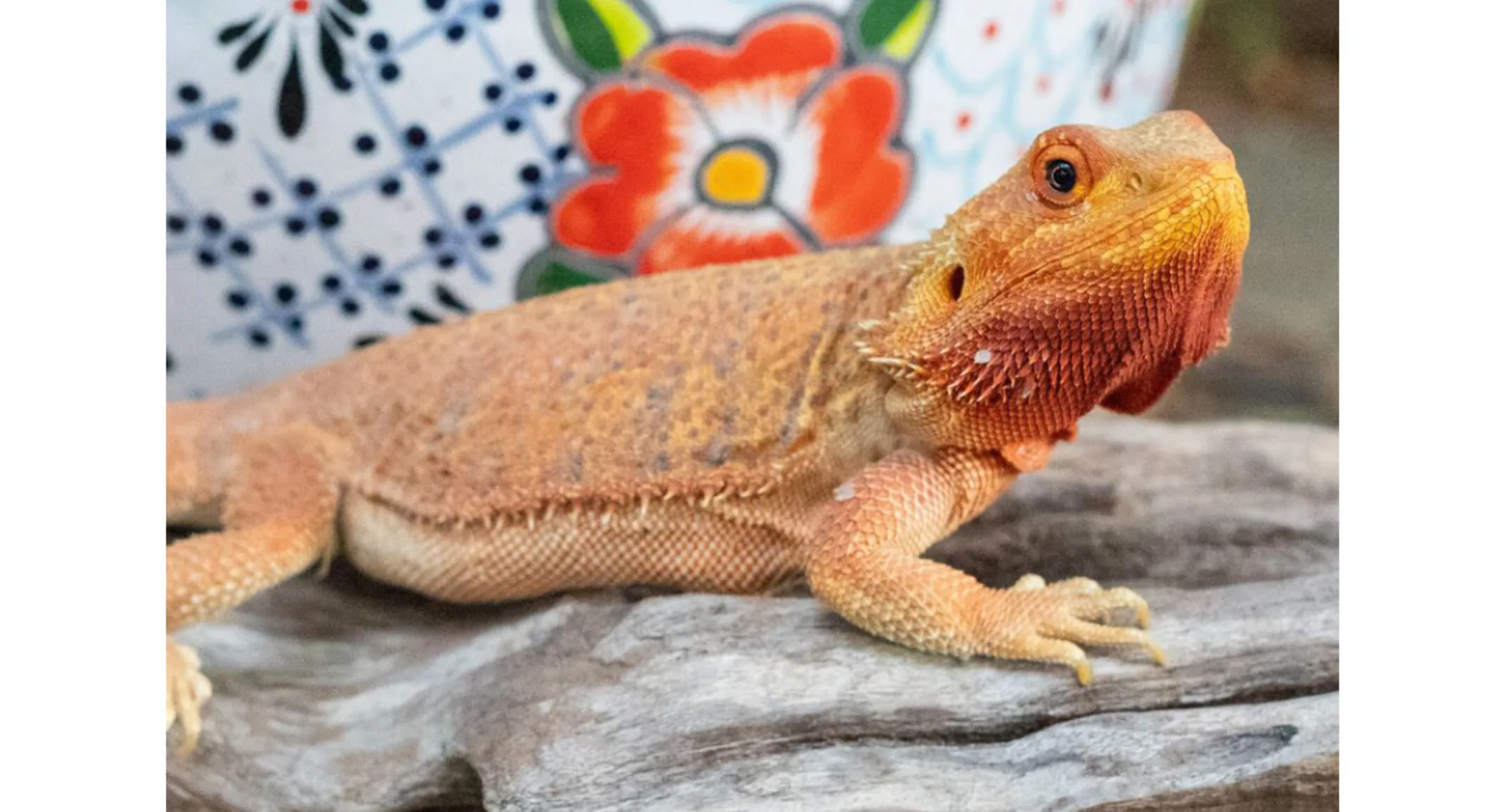Metronidazole Toxicity in a Bearded Dragon
June 16, 2025 · Avian & Exotics

HISTORY
A 4-year-old female intact bearded dragon (Pogona vitticeps) presented on emergency to the Avian & Exotics department at GCVS for acute onset of severe neurologic signs a few hours prior to presentation. The bearded dragon was noted to have appropriate husbandry and diet. She had been getting treated for Blastocystis sp. with oral metronidazole the previous 2.5 weeks by their primary veterinarian. The patient was receiving a compounding metronidazole suspension at a dosage of 85mg/kg orally once daily for 14 days. She was also missing her left hind foot, which was a historic finding.
PHYSICAL EXAM
On presentation, the patient was exhibiting a right-sided head tilt, increased muscular tone in the front limbs, extension of the head and neck, and a mouth gaping behavior (Figure 1). When attempting to ambulate, the patient would violently tremor (Figure 2) and exhibited intention tremors when presented with the roach with hemostats (Figure 3). When the prey item was placed directly in the opened mouth of the patient, she was able to chew and swallow it appropriately. The righting reflex was absent. Additional physical examination findings included a large amount of ropey saliva within the oral cavity, anisocoria, and a firm tubular structure palpable in the right coelom suspected to be consistent with feces.
Figure 1. Right head tilt and mouth gaping

Click the link below to view the related videos:
DIAGNOSTICS
A complete blood count was performed revealing toxic changes (toxic granules) within the heterophils with a normal total white blood cell count and normal packed cell volume. Blood chemistry revealed elevated creatinine kinase (CK 2575 U/L)) and hyperglycemia (399 mg/dL). Initial diagnostics also included whole body radiographs (Figure 3a and b) to evaluate bone density and look for any other potential foreign material. The radiologist report confirmed normal bone density and no radiopaque foreign material. The lung fields were noted to be asymmetric, likely due to atelectasis. Due to the reported hyperglycemia and persistent firm material palpable in the coelom, the patient later had a coelomic ultrasound performed. Results were consistent with desiccated fecal material and gastrointestinal dilation consistent with functional ileus.
Figure 3a – Dorsoventral view

Figure 3b – Lateral view (horizontal beam)

TREATMENT
The bearded dragon was hospitalized for 8 days receiving subcutaneous LRS (10ml/kg), ketoprofen (2mg/kg IM), vitamin B complex (for thiamine) at 0.3ml/kg SQ every 24 hours, ceftazidime (30mg/kg IM q72h), and midazolam (0.5mg/kg IM) as needed for episodes of severe vestibular ataxia (flipping, rolling, tremoring greater than 30 seconds). The patient was also gavage fed omnivore care and was assist fed Dubia roaches and mealworms.
Over the course of 8 days, the patient's severity and frequency of vestibular signs improved. She remained very sensitive to movement and would experience tremors with handling as well as difficulty locating and prehending food without assistance. The bearded dragon was discharged with additional doses of injectable midazolam to administer at home every 12 hours to reduce the severity of neurologic signs.
OUTCOME
On recheck examination 48 hours following discharge, the bearded dragon’s neurologic status was further improved. A fecal sample was expressed during coelomic palpation and submitted for testing for atedenovirus and a fecal sedimentation. The results of both tests were negative. A blood glucose was rechecked and was lower than on initial intake (259mg/dL). The owner was instructed to decrease the injectable midazolam dosing to once daily, continue ceftazidime at 30mg/kg IM every 72 hours at home, and to provide appropriate caloric intake through continued syringe feeding and assist feeding as needed.
The patient returned for another recheck 4 days later and was reported to not have any further episodes of severe vestibular activity at home. On examination, the bearded dragon still had an exaggerated head bobbing behavior but otherwise appeared normal. The owner was instructed to decrease the midazolam dosing to every other day and taper off the medication over the course of the next 3-4 doses if she has no further episodes. Ceftazidime was discontinued at this time. On subsequent follow-up communication 8 weeks later, the owner reported that the bearded dragon was doing well with near-complete resolution of neurologic signs.
DISCUSSION
Metronidazole is used widely in veterinary medicine for its antiparasitic, antiprotozoal, and antibacterial effects. It is bactericidal against obligate anaerobic bacteria and has antiprotozoal activity against Giardia spp. However, when given at high doses, especially when given repeatedly, side effects associated with the central nervous system (CNS) may manifest.
Additionally, clinical signs can also occur at lower doses when given for an extended period of time due to individual sensitivity or if there is decreased plasma clearance due to decreased liver function from a hepatopathy. Clinical signs of toxicosis include nausea, vomiting, ataxia, tremors, opisthotonos, peripheral neuropathy, neutropenia, seizures, and death. Stop the metronidazole immediately if any signs of toxicity are noted. There is no specific antidote for this medication and treatment geared toward managing symptoms and providing medical support with fluid therapy and nutritional support. Anticonvulsants, such as midazolam can help abate tremoring and any seizure activity. Thiamine supplementation can be provided as an adjunctive therapy and may help decrease clinical signs of metronidazole-induced encephalopathies.
REFERENCES
The ASPCA Animal Poison Control center was contacted for consultation on this case.
Gibbons PM. Advances in Reptile Clinical Therapeutics. J Exotic Pet Med Jan 2014; 23(1): pp 21-38. https://doi.org/10.1053/j.jepm.2013.11.007
Fitzgerald KT, Newquist KL. Poisonings in the Captive Reptile. In: Small Animal Toxicology 3rd ed, 2013. pp. 229-249. https://doi.org/10.1016/B978-1-4557-0717-1.00020-X
Case Study by Sarah Dickerson, DVM and Sue Chen, DVM, ABVP (Avian)
